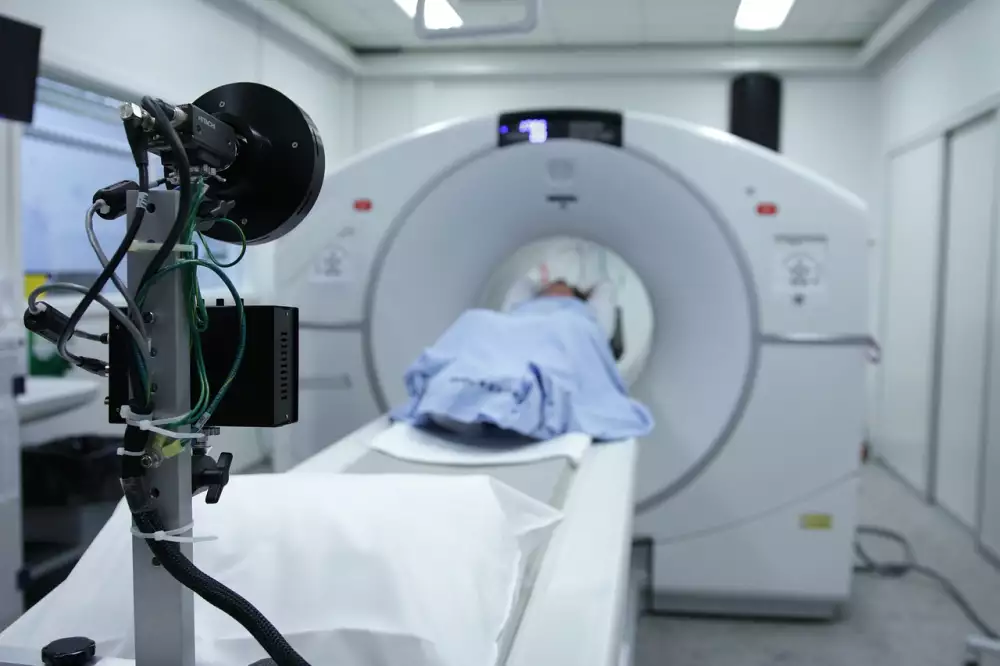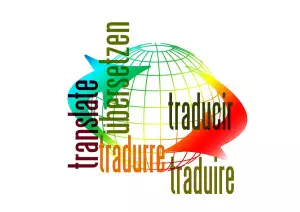A guide to the world of CT scans: unlock the secrets of computed tomography for your health

In recent years, the CT scan has become a very important tool for the diagnosis of many diseases. With the help of this imaging examination, doctors are able to examine the anatomy and condition of organs, tissues or bones in detail. This makes it possible to quickly and accurately make diagnoses and determine the necessary treatment procedures. In this overview publication, we describe in detail how a CT scan is performed and what its main benefits are.
What is a CT scan
CT scanning, abbreviated as CT scanning, is a modern diagnostic method that uses computed tomography to provide detailed images of the internal structures of the body. In this examination, a special X-ray machine is used to produce 3D images of various parts of the body. This type of examination is often used to diagnose diseases of organs such as the heart, lungs or brain, but also to monitor the condition of bone tissue and to detect tumours and other pathological changes. CT scans are very accurate and help doctors detect problems early and deploy adequate treatment. The examination itself is painless for the patient and the overall procedure takes only a few minutes.
Principle and operation of CT
Computed tomography, abbreviated as CT, is a modern diagnostic method in medicine. The principle of operation of CT is that the patient is placed in a scanner that sends X-rays onto the patient's body. These rays are captured by the detectors and converted into digital signal data. This data is then processed by a computer and converted into an image that shows details inside the patient's body.
An important part of how CT works is the use of special algorithms to reconstruct the image. These allow 3D images to be constructed and show even very small changes in tissues or organs.
CT scans are used to diagnose many diseases such as malignant tumours, bleeding in the brain or inflammatory processes in the body. Importantly, CT scans are also very fast - they are usually completed within minutes - and accurate.
Computed tomography can reveal a lot of information about the condition of the body. The use of this technology is thus one of the key steps in modern medicine and helps doctors to diagnose and select the right treatment.
Use of CT scans in medicine
Computed tomography (CT) is a diagnostic method that allows detailed imaging of the internal structures of the human body. In medicine, it is used to detect various diseases and injuries such as tumors, inflammation, bleeding or damage to bones and joints. With this technology, doctors can obtain detailed information about a patient's condition without the need for invasive procedures. CT scans are also very useful in planning surgical procedures and monitoring the success of treatment. Despite its value, CT scanning also has its drawbacks, such as the high doses of ionizing radiation that are associated with it. Therefore, it is important to use this method only when it is truly necessary for diagnosis.
Preparing for a CT scan
Preparation for a CT scan is an important step in ensuring an accurate and effective examination. Before the actual examination, you must follow certain instructions prescribed by your doctor or nurse. These instructions include, for example, limiting food and drink before the scan to minimize the risk of side effects from the contrast agent that is administered during the scan. It is also important to give your doctor information about your medical conditions, such as allergies or chronic diseases, so that he or she can better assess the possible risks associated with the examination. During the examination itself, you will be placed in a special facility where a computer will be used to take pictures of your organ or body part and then these pictures will be analyzed by the doctor. Proper preparation for a CT scan can help minimize the risk of complications and ensure the most accurate results for your health.
Procedure of the scan
During the CT scan, the patient lies on a special table, which is then moved inside a tunnel with a rotating device. The machine sends out detailed images of internal organs and tissues using X-rays, from which a computer image is then created.
During the actual examination, the patient must be completely still to ensure the best quality images. However, he or she does not have to worry about any pain or other discomfort. For some types of examination, it may be necessary to administer a contrast agent, either into a vein or by mouth beforehand. This procedure allows doctors to observe certain organs, such as the liver or kidneys, with high accuracy.
The total length of the examination is individual and varies according to the specific diagnosis and the extent of the examination. Once the examination is complete, the patient can leave the office immediately and return to their normal activities without any restrictions. The total time from the examination to the processing and evaluation of the results usually takes several days.
Safety and risks associated with CT
Safety and risks are important issues associated with CT scans. Although it is a valuable method of diagnosis, there are some risks associated with patient exposure to ionizing radiation during the scanning process. This type of radiation can potentially damage tissues and lead to cancer, especially if subjected to regular CT scans.
To minimize these risks, physicians and technicians first carefully assess the benefits of a CT scan for a given patient to ensure that radiation exposures are as low as possible. In addition, modern CT scanners are designed to minimize radiation exposure through technologies such as low-dose scanning or dose detection.
Another risk associated with CT scans may be allergic reactions to the contrast agents used. These agents are often used to provide better images of organs or tissues of a particular area of the body. Patients should inform their doctor of any allergies or sensitivities to other drugs.
Although there are some risks associated with CT scans, they are generally a safe and effective method of diagnosis. It is important to talk to your doctor about all the options and risks before deciding to have this type of test.
Advantages and disadvantages of CT scans
CT scanning is one of the most modern and advanced diagnostic methods available to us today. There are many advantages to its use, but there are also some disadvantages associated with it.
The main advantages of CT scanning include its speed and accuracy. With the use of a computer, a very detailed image of the organs in the body can be obtained within minutes, allowing doctors to make a quick diagnosis and intervene quickly when complications arise. Another advantage is the ability to distinguish small changes in the state of tissues and organs, which is very useful, for example, in detecting neoplasms or metastases.
However, there are some risks and disadvantages associated with the use of CT scanning. The biggest potential risk is exposure to ionizing radiation, which can have long-term negative effects on the patient's health. It is important to follow proper protocols to reduce this exposure. Another disadvantage, of course, is the cost of this type of testing, which can often be costly for patients.
In summary, CT scanning is a very useful and modern method of diagnosis. Its advantages in accuracy and speed are invaluable, but it is important to be aware of the potential risks and disadvantages associated with its use.
Restrictions and contraindications to CT scanning
CT scanning is now an essential element of modern medicine. It provides important information about the state of internal organs and tissues that cannot be obtained by other diagnostic methods. However, as with any medical procedure, there are certain limitations and contraindications to CT scans.
For example, allergies to contrast agents used in the examination may be a limitation. These substances are administered to the patient intravenously to improve the contrast between tissues and organs on the images. However, if the patient has an allergic reaction to this substance, symptoms ranging from skin rashes to anaphylactic shock may occur.
Another limitation may be the patient's physical limitations, such as when they cannot endure immobility for the duration of the scan (usually between 5 and 30 minutes). This can be problematic for some patient groups such as pregnant women, children or people with intellectual disabilities.
Contraindications to CT scanning are conditions where the result of the CT scan could be harmful to the patient. This can happen, for example, in patients with advanced renal failure who cannot eliminate contrast agents from the body and are at risk of kidney damage.
In any case, it is important to consult a physician about possible limitations and contraindications to the examination before performing the actual CT scan.
Alternatives to a CT scan
If you are looking for alternatives to CT scans, there are some options that may be useful for certain diagnoses. MRI (magnetic resonance imaging) is one of the most common alternatives to CT. This scan uses a strong magnetic field and radio waves to get detailed images of the body. Another alternative may be ultrasound or PET (positron emission tomography) scans, which use special technology to monitor the function of organs and tissues.
Choosing the right type of examination depends on the patient's specific needs and the doctor's diagnosis. Therefore, it is important to discuss the advantages and disadvantages of different methods with your doctor before deciding on a specific type of examination.
In conclusion, ct examination is becoming an increasingly important diagnostic method in medicine. Thanks to this technology, doctors can obtain very detailed information about the internal organs and tissues of the patient, which allows them to discover various pathologies and start a quick and effective treatment. However, although this method is common and safe, it must be used with caution and only when the patient's condition actually requires it. Therefore, ct examination should be a reliable tool for improving a person's health status.
Resources
The right resources are important in CT scanning to ensure accurate and quality results. The basic resource is the CT machine itself, which must be modern and equipped with the latest technology. Another resource is the radiologists who perform the examination and interpret the results. It is essential that they have sufficient knowledge and experience in interpreting CT scans. Contrast agents, which are used to better visualise organs and tissues, are also an important resource. These agents must be of high quality and safe for the patient. Last but not least, the patient himself is an important resource, as he must follow the doctors' instructions, for example regarding movement during the examination or limiting previous eating and drinking. Together, these resources enable highly reliable diagnostic methods using CT scans.
Published: 16. 10. 2023
Category: Health



